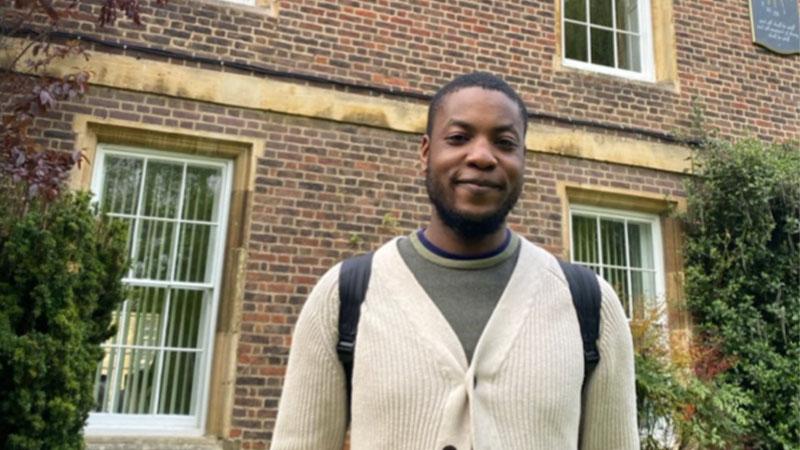With a deep appreciation for nature and community, Zach Omitowoju, an Artificial Intelligence, Data and Communications MA student at the University of Westminster, has won first place in the University’s Biodiversity Creative Arts Competition with a powerful and thought-provoking poem that explores how nature quietly endures in the urban spaces that are often overlooked. Here he shares his inspiration behind his poem, how his time at Westminster has shaped his creative voice and how art can play a powerful role in raising awareness about the natural world.

What does biodiversity mean to you personally and creatively?
Biodiversity represents the connection we all have with the planet – how we are linked to ecosystems we often overlook. Creatively, it offers plentiful inspiration, allowing me to look at every living organism through a different lens, rather than just at face value. It encourages me to explore life beyond the obvious – to go deeper into the existence of these creatures and understand the intricacies of their lives. That deeper look fuels my writing.
How does your work engage with themes of nature, ecology or the environment?
My work often explores the contrast and similarity between natural and urban environments. I’m fascinated by how nature persists, often unnoticed, in spaces like cities. I like to observe how everyday environments, even streets and buildings, are subtly reclaimed by nature. For example, rivers flowing beneath skylines or plants emerging from concrete cracks. It is these quiet, persistent presences that I try to highlight in my writing.
Do you believe art can play a role in raising awareness or driving action around biodiversity loss?
Absolutely. Art has the power to stir emotion and evoke empathy. When it comes to biodiversity loss, that emotional connection is crucial. In this case, I wanted my poem to feel personal – something that reconnects people to the natural world around them. If it encourages someone to pause and notice the nature in their own surroundings, or even to reflect on how we might protect what remains, then it is doing more than just expressing a feeling – it is opening a door to action and awareness.
Was there a particular moment or experience at Westminster that inspired you to focus on biodiversity in your art?
Sure! My surroundings at Westminster, especially the people, played a huge role. Being around passionate, proactive young people who genuinely care about the future has been a catalyst for my own interest in biodiversity and ecology. That environment really helped me dig deeper into these themes in my work.
Have you been involved with other sustainability initiatives at Westminster that you have enjoyed?
Definitely. This is not my first rodeo! One of my first experiences was participating in the Sustainability Hackathon and then attending a Carbon Literacy Training event at Westminster. Both were incredibly eye-opening and gave me a stronger understanding of how we can reduce our carbon footprint and engage in meaningful change.
Find out more about Sustainable Development initiatives at the University of Westminster.
Read Zach's winning poem below.
London in her Bloom
By Zach Omitowoju
Beneath the engines and footsteps,
behind glass towers and crowded streets,
London is alive in ways unseen.
The Thames moves steadily,
carrying whispers of tides and time.
Brown trout slice the surface,
electric blue against grey water.
Crabs clamp in the depths,
where swans gracefully glide along the surface.
On Hampstead Heath, deer step through the bracken,
watchful, cautious, part of a landscape
older than the roads that surround it.
Foxes weave through alleyways at dusk,
their eyes catching the glow of streetlights,
as if the city belongs to them.
In Richmond, ancient oaks
stretch their limbs toward the sky.
Crows gather in their branches,
watching over the shifting world below.
In the gardens of Battersea and Kew,
bees hum over lavender,
butterflies drift between wildflowers,
and moths gradually, lightly flap their
when the city sleeps.
The canals in Camden reflect
skies that shift from grey to gold.
Lily pads cluster in the stillness,
while dragonflies hover,
wings catching the last of the light.
Even where the skyline breaks the horizon,
nature continues.
Green rooftops soften the concrete,
ivy clings to old brick,
wildflowers push through cracks in the pavement,
their roots deep in the city’s bones.
London is not just buildings and people.
It is fox trails and rivers,
wind in the sycamore trees,
the quiet resilience of life
that grows between everything we build.


